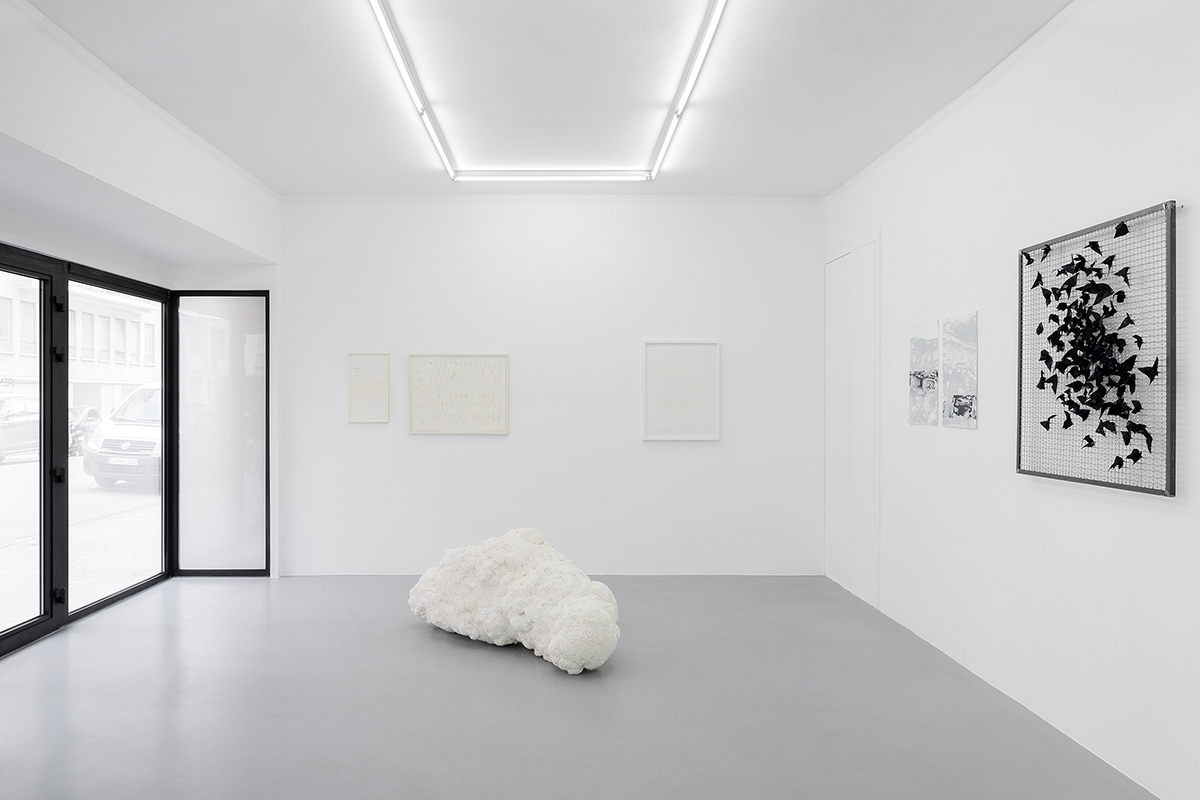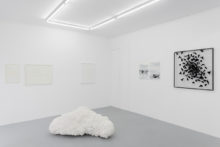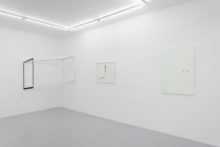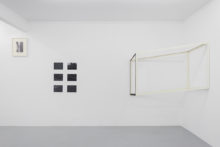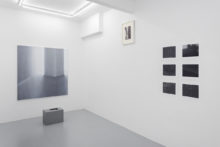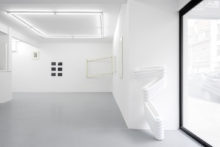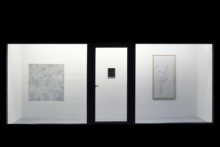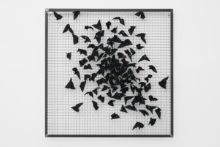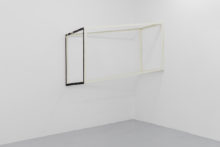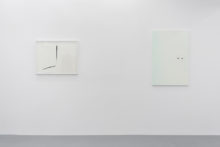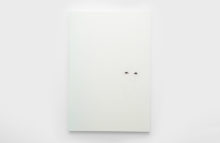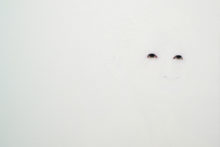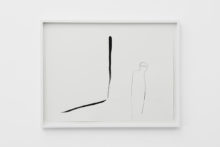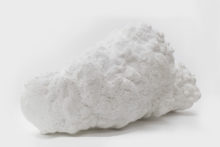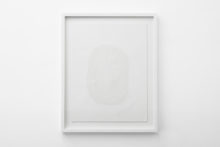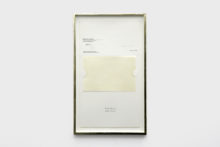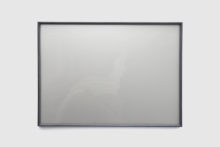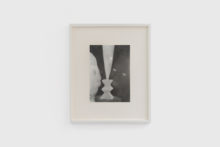LUCILE BERTRAND • RUI CALÇADA BASTOS • JOSÉ PEDRO CROFT • EIRENE EFSTATHIOU • PASCAL HAUDRESSY • GAUTHIER HUBERT • GUDNY ROSA INGIMARSDOTTIR • ATHINA IOANNOU • PIETER LAURENS MOL • PEDRO A.H. PAIXÃO • PANOS PAPADOPOULOS • ROELAND TWEELINCKX • BERNARD VILLERS • TATIANA WOLSKA
From ancient Greek a- (without) and khrōma (color), ACHROME evokes the absence of color, a recurring topic in the avant-garde investigations of many Modern and Contemporary artists, from Édouard Manet to Piero Manzoni, Robert Ryman, Robert Rauschenberg or Roman Opalka. This summer exhibition at Irène Laub Gallery is a group show presenting artworks dealing with the diverse implications of that absence.
For most of us, colors are a code that allows us to structure our perception of the world, a fundamental sensory experience. Therefore, removing colors can be a way to create a disembodied, distanced exploration of reality. In the work of José Pedro Croft, Pascal Haudressy, Roeland Tweelinckx and Panos Papadopoulos, minimal spaces, built in shades of grey and with just a few lines, can establish a meditative atmosphere and focus on the perception of volumes and harmony. Then, as it is the case with Pieter Laurens Mol and Athina Ioannou, a sense of weightlessness and organic growth can emerge from mathematics and inflexible structures. Disappearing colors also evoke the loss of memory and information, as evidenced by the remains of real-life events and historical archives subtly brought to light by Eirene Efstathiou and Lucile Bertrand. In direct relation to that concern, Pedro A.H. Paixão and Gauthier Hubert use a colorless palette to reflect on – or play with – ideas of identity and ethnicity. Finally, ACHROME links to themes of absence, erasure and disappearance in a more direct sense. Works by Rui Calçada Bastos, Gudny Rosa Ingimarsdottir, Bernard Villers and Tatiana Wolska deal the barely perceptible : blocking the view, hinting at something hidden, or drawing upon negative space or leftover parts to shape their composition.
Read more about Lucile Bertrand, Rui Calçada Bastos, José Pedro Croft, Eirene Efstathiou, Pascal Haudressy, Gauthier Hubert, Gudny Rosa Ingimarsdottir, Athina Ioannou, Pieter Laurens Mol, Pedro A.H. Paixão, Panos Papadopoulos, Roeland Tweelinckx, Bernard Villers, Tatiana Wolska.
